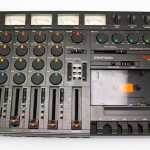Do Recording Artists need Producers?
Depends…Often when you’re under the microscope of the studio you can rarely judge accurately if you’ve given it your best. You can rarely be objective enough to know what you put down is actually what you are after. A good producer can offer that. However, if you are really focused you can do it yourself. Take for example, one of my favorite artists, Billy Childish, who loathes the idea of a producer yet has managed to put out over 100 cool records. Then again, Billy Childish is one focused fella when it comes to his art.
Some of my favorite producers – Roger Moutenot, Chris Thomas, Tucker Martine, understand that the gig is just as much about people and psychology as it is music. They become an integral part of the formula and work very transparently. Consequently, they often don’t get credit where it is due (what did he actually do?!). No matter – let’s look at what can happen without one.
Case A: The artist knows what he/she is doing, has the studio and all the musicians in order, songs together, band rehearsed, nails the performance, pays attention during the mix and leaves with an amazing record. Now this takes a lot of work, a lot of mistakes and a lot of experience to do. Nothing like finding that out in a studio! Do you need that kind of stress? Maybe. If you have done 10 years of 4 tracking and are able to produce in your own environment – then consider making a record that way, because that will all change the moment you walk into another studio. Your experience will need breadth as well as depth. Frequency – rare.
Case B: The engineer or someone playing on the session ends up producing by default. Usually this person will develop a migraine from the multi-tasking, won’t have much fun and will probably feel underpaid. This will affect the session. What? The engineer/producer erased a track? The mix isn’t what you wanted? The guitarist hates what he played? Frequency – often.
So, if you are not afraid of a new relationship and are willing to put an effort into finding a good producer, it can pay off. You are going to have to put a lot of trust in the person producing, trust that he/she is of like mind about your project and that you’re both going for what you ultimately want to hear.
One last caveat! (Case C) A bad producer is the result of bad communication. And a bad producer is probably worse than none at all. So choose wisely.
Production Tip #1 – Work on your songs and arrangements before you step into a studio. Work is the key word. Takes up time. Makes better records. Great SONGS and compositions are the most key ingredient in making make great records.




